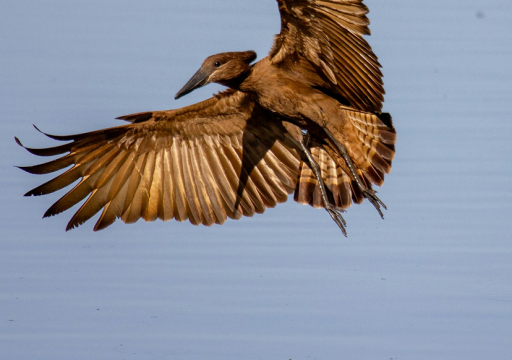- Courses
- GS Full Course 1 Year
- GS Full Course 2 Year
- GS Full Course 3 Year
- GS Full Course Till Selection
- Online Program
- GS Recorded Course
- NCERT (Recorded 500+ Hours)
- Polity Recorded Course
- Geography Recorded Course
- Economy Recorded Course
- AMAC Recorded Course
- Modern India, Post Independence & World History
- Environment Recoded Course
- Governance Recoded Course
- Science & Tech. Recoded Course
- International Relations and Internal Security Recorded Course
- Disaster Management Module Course
- Ethics Recoded Course
- Essay Recoded Course
- Current Affairs Recoded Course
- CSAT
- 5 LAYERED ARJUNA Mentorship
- Public Administration Optional
- ABOUT US
- OUR TOPPERS
- TEST SERIES
- FREE STUDY MATERIAL
- VIDEOS
- CONTACT US
First Report 0n World’s Animal Health
First Report 0n World’s Animal Health

Significance: GS III; Environment; Science and Tech; Diseases;
Why in the News?
In May 2025, the World Organisation for Animal Health (WOAH) released the world’s first comprehensive report on the state of animal health.
- This landmark report provides the global challenges, trends, and risks facing animal populations, with major implications for food security, public health, trade, and ecosystems.
- The report is a response to the increasing complexity of animal disease dynamics in a rapidly changing world.
|
About WOAH
|
What are key highlights from the World’s Animal Health Report (2025)?
- Changing Disease Patterns and Spread: Infectious animal diseases are expanding into new geographical regions and affecting previously unaffected species, driven by climate change and increased global trade.
-
- Nearly 47% of these diseases have zoonotic potential—meaning they can be transmitted from animals to humans—posing direct risks to public health.
- Rising Intensity and Frequency of Outbreaks: Diseases such as avian influenza (bird flu), African swine fever, and foot-and-mouth disease are increasing in both frequency and intensity, disrupting agriculture, food systems, and biodiversity.
-
- In 2024, avian influenza outbreaks in mammals more than doubled compared to 2023 (1,022 outbreaks in 55 countries vs. 459 in 2023), raising concerns about the virus adapting for mammal-to-mammal or even human transmission.
- Emergence in New Regions: Diseases traditionally confined to certain areas are now appearing elsewhere:
-
- For example, the Peste des petits ruminants (PPR), once limited to developing countries, has re-emerged in Europe.
- African swine fever reached Sri Lanka, traveling over 1,800 km from the nearest previous outbreaks.
- Food Security and Economic Risks: Animal disease outbreaks threaten global food security and trade, with the potential for significant economic losses and impacts on livelihoods, especially in low- and middle-income countries.
-
- For example, Bird flu has led to the culling or loss of over 630 million birds in the last two decades.
- Antimicrobial Resistance (AMR): By 2050, AMR could jeopardize the food security of 2 billion people and result in a projected US$100 trillion economic loss if not urgently addressed.
-
- Antibiotic use in animals fell by 5% globally between 2020 and 2022, with Europe and Africa showing the largest declines.
- However, one in five countries still use antimicrobials as growth promoters, a practice discouraged by WOAH.
|
CASE STUDY: The Yelcho Project in Chile
|
- Uneven Vaccine Access and Disease Prevention: Vaccination is highlighted as a key tool for disease prevention, reducing economic losses and the need for antibiotics, but global access must be improved.
-
- WOAH’s vaccine banks have delivered nearly 30 million dog rabies vaccines in Africa and Asia, but progress in rabies control has recently stalled.
What is special about this 2025 WOAH Report?
- For the first time, the report provides a granular analysis of antimicrobial use in aquaculture compared to terrestrial food-producing animals.
-
- Findings indicate that Fluoroquinolones (a class of antibiotics used in aquaculture) accounted for 15.8% in aquaculture.
-
- Their widespread use is concerning because it contributes to the development of antimicrobial resistance (AMR) in aquatic environments, which can impact both animal and human health.
- This highlights the need for careful management and alternative disease control strategies, such as vaccination and improved farm practices, to reduce reliance on fluoroquinolones and other antibiotics in aquaculture.
- 64% of the global aquatic biomass is now covered in the AMU dataset, improving the precision.
What are the Economic impacts of antimicrobial resistance in food-producing animals?
- By 2050, AMR could cause massive losses in livestock production, reducing the global supply of meat and dairy.
-
- The estimated loss is so large that it could equal the food consumption needs of up to 2 billion people per year (up to US$ 5.2 trillion).
- The impact will be severe in cattle and poultry farming, where antibiotic use is high.
- Farms may struggle to keep animals healthy, leading to lower meat and dairy output and higher food prices.
- This loss would slow economic growth, increase food insecurity and strain healthcare systems.
What are the recommendations given by the WOAH Report?
- Vaccination Is Vital: Even distribution of the vaccines has helped eradicate some deadly diseases (like rinderpest) and is crucial for fighting others like rabies, foot and mouth disease, and avian flu.
-
- Using vaccines means less need for antibiotics, which helps slow down antimicrobial resistance (AMR)—a growing global threat.
- Data and Surveillance: Good data is crucial for tracking diseases and responding quickly. WOAH collects and shares official data on animal diseases, which can help the countries to prepare and react to outbreaks.
- Global Collaboration Needed: Animal diseases don’t respect borders—countries must work together.
- The report calls for more investment in veterinary services, better disease monitoring, and stronger international cooperation.
|
PYQ Significance: Q. Can overuse and free availability of antibiotics without Doctor’s prescription, be contributors to the emergence of drug-resistant diseases in India? What are the available mechanisms for monitoring and control? Critically discuss the various issues involved. (UPSC CSE 2014) |



